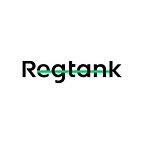What is Blockchain Technology, and Why Do We Use It?
As the adoption of cryptocurrency becomes increasingly widespread, blockchain technology is now something that no business or financial institute can completely ignore. But apart from being a buzzword, what is blockchain technology and why is it becoming more prevalent?
The Problem Blockchain Serves to Solve
Almost all transactions required an intermediary before blockchain was implemented in the financial world (which was often the bank or other financial institutions).
And in a world where individuals want to take more agency over their data, being able to cut out the middleman allows one to achieve this goal while allowing for the added benefit of reducing the risk of becoming a data breach victim.
What is Blockchain Technology?
To eliminate the need for a middleman, blockchain technology uses a decentralised and immutable ledger that helps facilitate in ensuring that all transactions are tracked and recorded correctly.
In simpler terms, blockchain technology can be viewed as a growing database that keeps track of all cryptocurrency transactions. Once an entry is made on the database, it cannot be changed or deleted, making all cryptocurrency transactions final and irreversible. With cryptocurrency transactions, consider storing your funds in a crypto wallet.
How Does Blockchain Technology Work?
Of course, the blockchain technology that underpins each cryptocurrency differs and functions differently. However, there are three fundamental aspects of the technology that remain similar — the use of encryption to keep transactions secure and private, a shared ledger (a decentralised database), and a system for computing and recording transactions.
Here’s a simplified explanation of how a blockchain functions:
Every network participant starts with a ledger of initial values (the amount of cryptocurrency everyone starts with). Whenever someone wants to make a transaction, everyone is notified and will check that this person has enough money for the transaction to occur. The transaction will occur if the person has enough money, and everyone will record it in their ledgers.
After a few of these transactions, the ledger page is filled and everyone compares their values with each other. Through complicated calculations (in a Proof of Work system), a consensus is reached between everyone (Nodes) in the network and a ‘block’ is created (Block A). When the next block is made, it will point back at Block A, creating a blockchain. In a blockchain network, the longest chain will be the one that everyone treats as accurate, making it difficult for anyone to create new coins from nothing or to alter old blocks.
Other Blockchain-Related Terms
As with other new technological developments, blockchain technology comes with jargon that might be difficult to understand. Here are two different terms that might come up in a conversation about blockchain:
Hashing:
In a blockchain, the hashing function is deterministic (the same input will always return the same output) and unique (two different inputs will never give the same output), allowing the hash to be used as unique identifiers for every transaction.
51% attack:
In a blockchain, a 51% attack refers to an attack where miners either control over 50% of the blockchain network’s computing power (in a Proof of work system) or when validators’ have acquired over 50% of the total staked tokens in the pool (in a Proof of stake system). With this control, the attackers could then prevent new transactions from being confirmed and possibly even reverse the transactions that were completed while they were in control, allowing them to double-spend their coins.
The Benefits of Blockchain
Because of blockchains’ decentralised structure, the same data is stored in nodes across the system. This ensures that the data is transparent to everyone taking part in the network, increasing the trust between parties and removing the need for a third party middleman. Decentralisation eliminates the risks of data loss and increases data security, making blockchain a perfect platform for tracking transactions between any parties.
While the developments in blockchain technology remain fresh, the adoption of such technologies will continue to rise. And amidst the constantly developing technology and the regulations implemented to prevent money laundering and the financing of terrorism, Regtank remains committed to providing the best compliance solutions.
Contact us at info@regtank.com for a demo!
Originally published at https://regtank.com on January 27, 2022.
